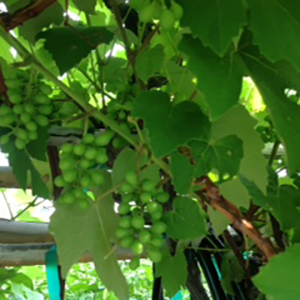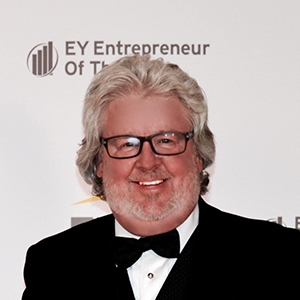Written By: Jess Phillips
In 1993, the United Nations Generally Assembly designated March 22nd as “World Water Day.” It’s a day to celebrate water, evaluate how we use it, and reflect on global water-related issues.
Only 3% of the world’s water is suitable for human use, and 99% of it that unavailable1– a startling statistic when you consider that fresh water is essential to sustain life on Earth. We need it to survive: to replenish thirst, to sustain proper hygiene, and to support agricultural and industrial efforts.
Each year, World Water Day celebrates a different theme, and this year’s theme is “Water and Sustainable Development.” We asked Dr. Steve Oney, Ocean Thermal Energy Corporation’s Chief Science Advisor, to shed light on the topic, as he has been invited to speak about the benefits of Seawater Air Conditioning at the United Nations Environmental program in The Bahamas on March 22nd.
JP: First of all, let’s get to know you. You are the “Chief Science Advisor” for Ocean Thermal Energy Corporation. What exactly does that job entail?
SO: My responsibilities are to help direct what technologies we employ, what approaches we take to the sustainable development of each project, and the science and credibility to the company’s corporate structure. In addition, I focus on the direction and implementation of our technology, the locations that we decide on, and how to prioritize future development.
JP: Ocean Thermal Energy Corporation works to commercialize Ocean Thermal Energy Conversion (OTEC)- a premiere technology, which provides an unlimited source of renewable energy from ocean water that has been heated by the sun. With the ocean and sun being unlimited resources of energy, why aren’t we seeing more of this technology in development?
SO: Throughout through the course of human history, oil has traditionally been very inexpensive and that has been our primary resource since the industrial revolution. Oil was actually very inexpensive until about 2001-2002, which for the development of new technologies is a very limited amount of time- about 12 years or so. It takes a while to scale these things up to a point where large-scale systems like OTEC, SWAC, etc. become commercially acceptable from an economic standpoint.
Traditional energy systems have taken between 60-80 years to change from one principal energy source to the next like wood to coal, coal to oil, etc.
We can’t expect conversion of new systems to take over from oil immediately. We’re in the process of doing that and OTEC will be a major player in the renewable energy market in the next 20-30 years probably.
JP: So OTEC only works in certain parts of the world- right near the equator. How does that benefit someone like you or me who lives in the Northeast region of America? Can we take that energy and transport it around the world?
SO: Sure. Ultimately, we envision a society or system whereby off-shore energy production will occur near the equatorial regions- in the tropic zones- then transport that energy via some sort of energy carrier- either hydrogen or ammonia or some manufactured energy carrier of that nature- to move the energy from the equator to the zones where industry occurs.
This is something that’s not far-fetched. Right now we use liquid nitrogen all the time for NASA and the space shuttles. They all run on liquid nitrogen and those kinds of energy markets are open to us on a very large scale once OTEC matures. Those are all things that are occurring very slowly right now but will be brought up in years to come as traditional energy sources.
JP: You mentioned ammonia; people get nervous hearing ammonia in the ocean. Is there a risk with this technology? Would it affect the quality or pH of the ocean water?
SO: Everything we do as humans has an environmental effect, so I’m not going to say there’s no impact. OTEC, Solar panels, wind mills- they all have impacts. You have to measure the impact versus their potential. Compared to existing systems, OTEC is a much more natural alternative
Ammonia is a naturally occurring compound in the environment. It’s a waste product from all kinds of biological activities. Raw ammonia is used as a fertilizer in large industrialized farms. So, ammonia is not a major concern from an environmental standpoint.
There are things that might have an impact on a local scale, but not on a global scale. If there was a spill, we would probably cause local fish kills due to an immediate high concentration of ammonia, but it would naturally disperse very quickly. That’s one of the major attractions of OTEC. Our system, even used for global application, still falls in the natural order of the fluctuation of the natural system: we’re extracting heat and moving it from hot to cold, which is what Mother Nature does in the form of atmospheric and oceanic pattern cycles. We’re just doing it on a much smaller scale and vertically in the tropical oceans.
Compared to our traditional systems, these concerns are absolutely benign. If you think about the oil spill from BP in the gulf- we’re still cleaning up that mess.
JP: While on the topic of the effects on the ecosystem- Scientists have discovered an estimated half-a-million cubic kilometers of low-salinity water along the ocean floor.2 It has been suggested that we can extract this water for human use. What are the environmental impacts of such a process (if any)?
SO: Low-salinity water is actually trapped in the ocean floor along certain regions. The salinity increases slightly at the bottom of the ocean than at the surface, which is why it sinks to the bottom. It’s very dense.
What that requires is to drill into those much like we do on land. It’s encouraging that it’s available, but it won’t be cheap to obtain and it’s still isolated in specific locations. It may be able to help those locations where it’s already available, but we still haven’t come up with a system where transporting water over long distance makes any economic sense. We’re probably centuries away from where water is that valuable and you’d want to pump it miles from say Upstate NY to Arizona.
The reality is that water is scarce, and with the global warming and climate change that were experiencing that’s probably going to be exacerbated throughout the next century. Water is a huge issue for the future.
JP: When we talk about OTEC producing clean water, that’s a different concept than this water found beneath the ocean floor, right?
SO: Correct. We’re converting seawater to fresh water. That’s the method that OTEC uses. It has a lot of synergistic applications, which reduce the cost and environmental impact from fresh water production. The infrastructure is already part of the OTEC system: the availability of large flows of water and the production of energy (which is required to separate the fresh water from the seawater.)
JP: Once OTEC creates fresh water, can we only use it locally near the OTEC plant?
SO: Yes, we haven’t reached the point where it’s economic to transport water long-distance. The good thing to remember is that much of our market place and much of the world that needs water is along the tropic regions of the planet, so OTEC is a natural technology to help alleviate stresses along coastal regions by providing energy and fresh water as local resources.
JP: The United Nations estimates that Sub-Saharan Africa alone loses 40 billion hours per year collecting water. 3 Does OTEC work in this area of the world and can it be a viable solution for these communities?
SO: It is for some of the communities along the Eastern and Western African nations. Some of Sub-Saharan Africa, some of central Africa, and places like Kenya or Tanzania are candidates for OTEC application- mostly offshore production. They just can’t be so far off shore that you couldn’t establish a water production facility and pump that fresh water into coastal communities for distribution.
JP: By 2050, agriculture will need to produce 60% more food globally, and 100% more in developing countries.4 How can fresh water produced from OTEC lead to increased food production?
SO: OTEC produces very pure, clean water, which is consistent with other industries and ideal for human and animal consumption. By having that, it opens up more opportunity to use the less pristine water they have now for agricultural and industrial purposes. They’re now not sharing the same water that they used for agriculture and industrial.
Also, the availability of this water allows for the further development of aquaculture and mariculture, which in many of the locations, will be new technologies and food resources. They will have a higher quality of life.
JP: The United Nations created the hashtag #WaterIs to inspire its audience to share what water means to them. What is water to you?
SO: #WaterIs life. Without it, we’re really in trouble.
Water has provided us with the stability of an atmosphere that allows life to exist by tempering the temperature swings and by providing a mechanism and means for us to live. 90% of our bodies are water. 70% of the planet is water. It’s the fundamental element required for our existence.
Taking it away from just “we need it to drink” and things like that, it is the basis of life in the universe to our current knowledge. We’re the only planet that we’re aware of that does have life. There’s no life on Mars or Venus because there’s no water.
JP: Is there anything else you want to add regarding OTEC and how it relates to sustainable development?
SO: There is an energy/ water nexus that exists. That means that as the world increases its requirement for water, it also increases its requirement for energy and vice versa. That’s a dilemma we face as a global society when we try to come up with sustainable development activities. OTEC not only provides renewable and sustainable energy, it provides sustainable development of water sources and that’s just as important. We can’t separate them at current technology levels.
That’s one of the most fundamental things we need to understand: our decisions need to be made to protect our water resources as much as it is important for us to create energy to support our industrial needs.
Stephen K. Oney, PhD – Chief Science Adviser, Ocean Thermal Energy Corporation (OTE)
 Dr. Oney has served as President and co-founder of the Company’s wholly owned subsidiary, OTEC Innovation Company (formerly OCEES International, Inc.) and currently serves as OTE’s Chief Science Adviser. He has 30 years of extensive experience in ocean engineering. Dr. Oney spent much of his academic and early professional career researching and developing Deep Ocean Water and Ocean Thermal Energy Conversion (OTEC) technologies at the Natural Energy Laboratory of Hawaii working with the Pacific International Center for High Technology Research and the Solar Energy Research Institute. This hands-on experience with OTEC and SWAC research, design and operation was integral in the research leading to the design and development of the first Net Power Producing Experimental (NPPE) land-based OTEC plant in Hawaii. His vast knowledge places him as one of the world’s foremost OTEC and SWAC experts. Recognized for his expertise, Dr. Oney was elected as the first U.S. Subject Matter Expert (SME) for the International Electrotechnical Commission (IEC) for the development of International Standards for OTEC and Seawater Air Conditioning (SWAC) and is well published on these and other deep ocean technology subjects and has been called upon to publish and deliver numerous international articles and lectures on these technologies.
Dr. Oney has served as President and co-founder of the Company’s wholly owned subsidiary, OTEC Innovation Company (formerly OCEES International, Inc.) and currently serves as OTE’s Chief Science Adviser. He has 30 years of extensive experience in ocean engineering. Dr. Oney spent much of his academic and early professional career researching and developing Deep Ocean Water and Ocean Thermal Energy Conversion (OTEC) technologies at the Natural Energy Laboratory of Hawaii working with the Pacific International Center for High Technology Research and the Solar Energy Research Institute. This hands-on experience with OTEC and SWAC research, design and operation was integral in the research leading to the design and development of the first Net Power Producing Experimental (NPPE) land-based OTEC plant in Hawaii. His vast knowledge places him as one of the world’s foremost OTEC and SWAC experts. Recognized for his expertise, Dr. Oney was elected as the first U.S. Subject Matter Expert (SME) for the International Electrotechnical Commission (IEC) for the development of International Standards for OTEC and Seawater Air Conditioning (SWAC) and is well published on these and other deep ocean technology subjects and has been called upon to publish and deliver numerous international articles and lectures on these technologies.
Citations:
- “Earth’s Freshwater.” © 1996-2015 National Geographic Society. http://education.nationalgeographic.com/education/media/earths-fresh-water/?ar_a=1
- Nicks, Denver: “Immense Freshwater Reserves Discovered Beneath Ocean Floor.” 2013 Time, Inc. © 2015 http://science.time.com/2013/12/09/immense-freshwater-reserves-discovered-beneath-ocean-floor/
- “Resource Guide on Gender and Climate Change.” United Nations Development Programme. 2009. http://www.undp.org/climatechange/library_gender.shtml
- UN-Water – World Water Day 2015 on Water & Sustainable Development. 2015. http://www.unwater.org/worldwaterday/learn/en/?section=c325497








